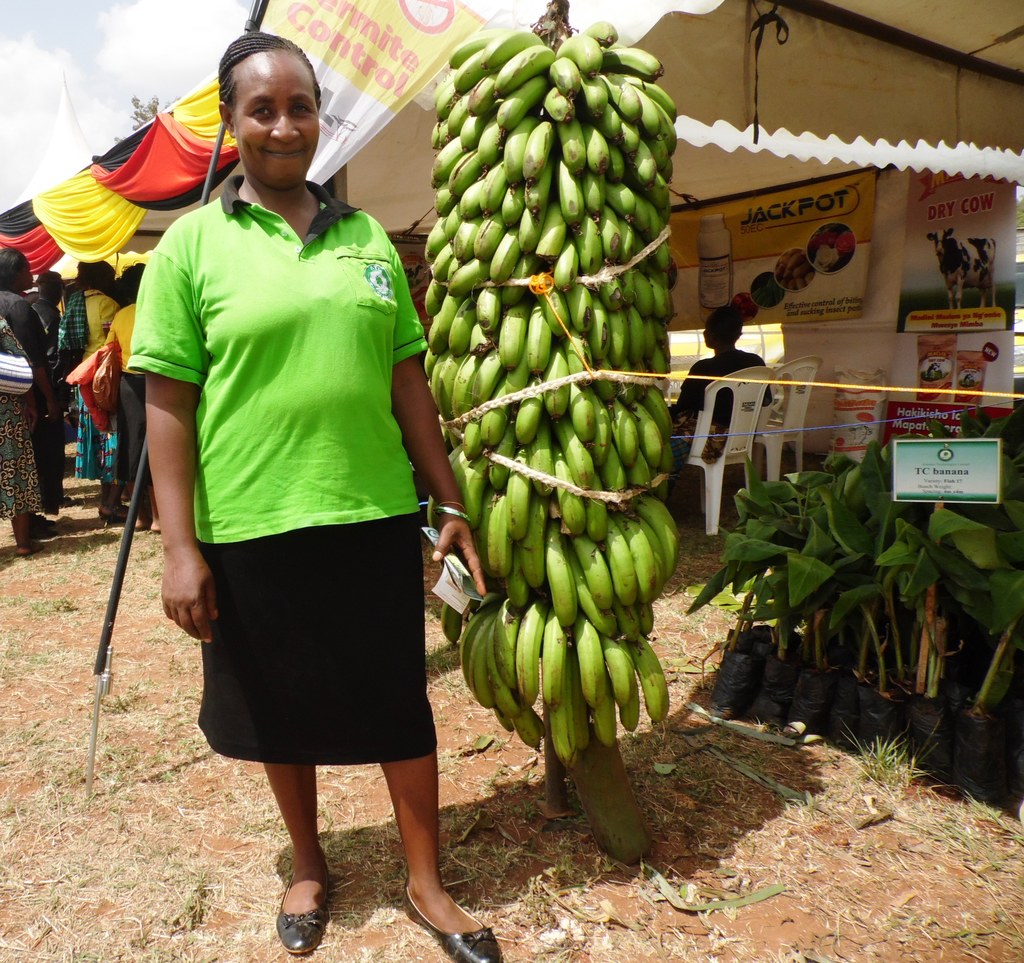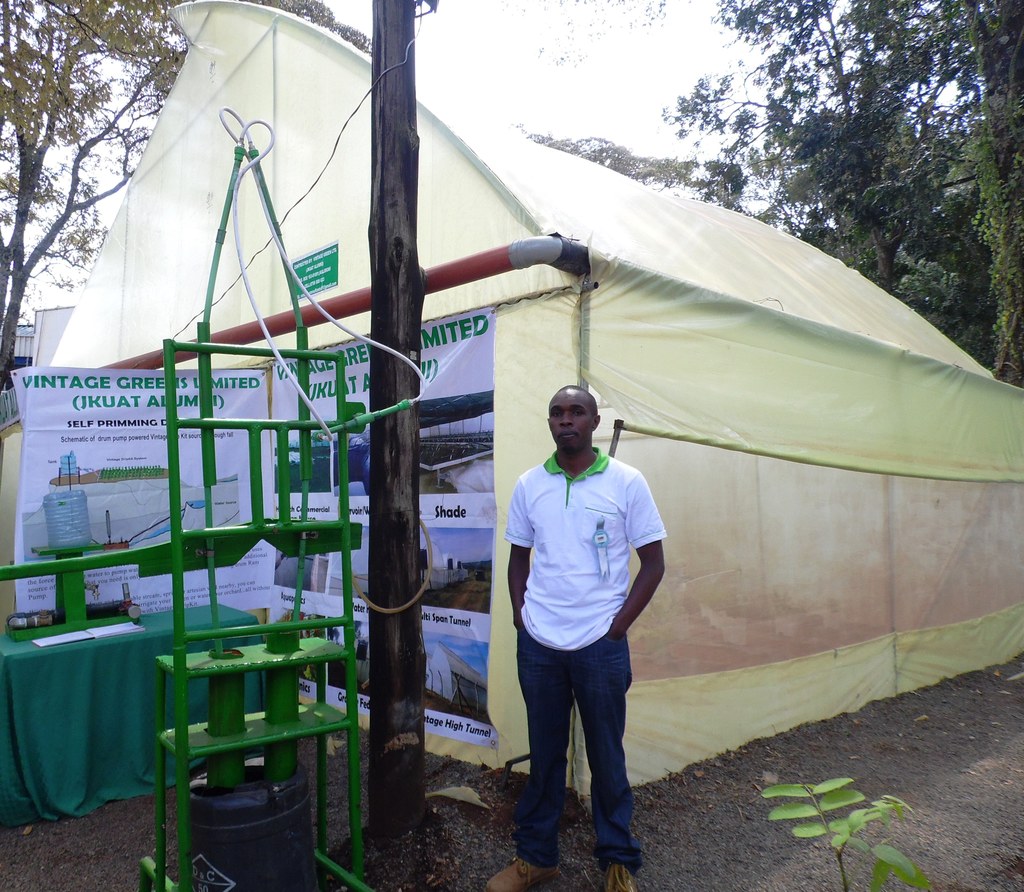Bungoma County farmer, Evans Shikuku, irrigates vegetables with a solar powered pump from Futurepump. The pump has enabled him buy a dairy cow after making savings from hiring generators. Photo Courtesy.
Evans Shikuku has ventured into dairy farming by saving on costs incurred in hiring a generator for irrigation after buying a solar pump from Futurepump.
The farmer has relied on irrigation for years to ensure success of his mix rotational programme of cabbages, amaranth, mrenda and cowpeas for leaves even with suppressed rainfall.
But it was untenable to hire and buy fuel for a generator every week for irrigation. The Futurepump has enabled him save gradually and bought a dairy cow.
In targeting the December to February market, when vegetables are in high demand, Shikuku bought the pump run by solar energy for irrigating his farm which borders river Sossion, through the support of Feed the Future flagship’s project, the Kenya Agricultural Value Chain Enterprises (USAID-KAVES).
On hiring a generator to pump water for at least 400 meters, Shikuku would spend fuel of up to Sh1,000; he also paid Sh800 for hiring the machine for everyday use.
In a month, he spent at least Sh7, 200 in a once per week flood irrigation, that is, if the weather is not so harsh to necessitate a repeat.
Between March 2016 and August 2016 he planted cabbages on half an acre.
Through hard work, implementing good agricultural practices on proper land preparation, chemical safety and record keeping from trainings and linkages received from Safe Produce Solutions Ltd as a contracted farmer.
After sales he earned Sh55,000 gross income and from the proceeds, Shikuku saved Sh21, 600, topped up the amount and bought an in – calf Ayrshire crossbreed dairy cow at a cost of Sh35,500.
READ ALSO: Solar incubator saves farmers when power outages occur
READ ALSO: Solar-powered pump slashes irrigation costs for farmers
READ ALSO: Solar powered mini silos tames grain loss
The cow gives him 12 cups, roughly equivalent to 12 pints per day. He sells eight pints at Sh20 each. “The only cost was the initial one of buying the solar pump. If I had used the same money in buying a generator, I could be incurring operational costs to date. The solar pump has helped me buy a cow to feed my family in addition to making an extra coin from the sale of milk,” said Shikuku.
The Futurepump SF1 solar irrigation unit is an environmental friendly pump, robust, easy to operate and maintain and suitable for small scale farmers.
Early adopters of solar water pumps in Kenya indicate a 30 per cent increase in production compared to rain-fed crops.
Feed the Future and its partners are pioneering the use of solar pumps for crop irrigation as a mitigation strategy to climate change.
At the moment, the Bungoma County - based farmer he is selling cowpeas, African leafy vegetables such as mintoo and mrenda that he grew on a three quarter of an acre.
The solar water pump interventions have not only given Shikuku a new income stream through dairy, but also enabled him to take part in the horticulture value chain, which is instrumental in providing more than seven million metric tons of highly nutritious fruits and vegetables annually, contributing to improved nutritional status in Kenya households and poverty reduction.
Write comment (0 Comments)

















